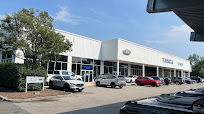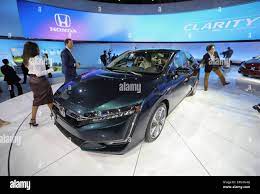The Transformative Journey of Automakers’ Innovation: Navigating Change in the Automotive Industry
The Ever-Evolving Landscape of Automakers: Adapting to Change
Automakers have long been at the forefront of innovation, constantly pushing boundaries and redefining the way we think about transportation. In recent years, however, the industry has faced unprecedented challenges that have forced companies to adapt and evolve in order to stay competitive in a rapidly changing landscape.
One of the biggest challenges automakers have faced is the shift towards electric vehicles (EVs). With advancements in technology and growing concerns about climate change, consumers are increasingly looking for more sustainable alternatives to traditional gasoline-powered cars. Automakers have had to invest heavily in research and development to bring EVs to market, while also building out infrastructure to support this new wave of transportation.
Another major disruption facing automakers is the rise of autonomous vehicles. Companies like Tesla, Google, and Uber have been leading the charge in developing self-driving technology, which has the potential to revolutionize the way we think about transportation. Automakers are now racing to incorporate autonomous features into their vehicles, while also grappling with thorny ethical and legal questions surrounding this emerging technology.
In addition to these technological challenges, automakers are also facing shifting consumer preferences and new entrants into the market. Companies like Tesla have disrupted the traditional model of car sales by selling directly to consumers online, bypassing dealerships altogether. This has forced traditional automakers to rethink their business models and find new ways to connect with customers in an increasingly digital world.
Despite these challenges, automakers remain resilient and adaptable. Many companies are embracing these changes as opportunities for growth and innovation, investing in new technologies and forging partnerships with other industry players. By staying nimble and responsive to changing market dynamics, automakers can continue to thrive in an ever-evolving industry.
As we look towards the future of transportation, one thing is clear: automakers will play a central role in shaping how we get from point A to point B. By embracing change and staying ahead of the curve, these companies can continue to drive progress and innovation in an increasingly interconnected world.
Top 5 Tips for Choosing and Maintaining Your Vehicle from Leading Automakers
- Regular maintenance is key to keeping your vehicle running smoothly and preventing costly repairs.
- Consider fuel efficiency when choosing a vehicle to save money on gas in the long run.
- Research different automakers’ safety ratings and features to prioritize your safety on the road.
- Compare prices from different automakers to ensure you are getting the best deal for your budget.
- Stay informed about recalls or updates from automakers to address any potential issues with your vehicle.
Regular maintenance is key to keeping your vehicle running smoothly and preventing costly repairs.
Regular maintenance is crucial for ensuring that your vehicle operates smoothly and efficiently while also preventing the need for expensive repairs down the line. By staying on top of routine maintenance tasks such as oil changes, tire rotations, and fluid checks, you can extend the lifespan of your vehicle and maintain its optimal performance. Taking the time to address minor issues early on can help you avoid more significant problems in the future, saving you time, money, and potential headaches. Prioritizing regular maintenance is a smart investment in the longevity and reliability of your vehicle.
Consider fuel efficiency when choosing a vehicle to save money on gas in the long run.
When selecting a vehicle, it is essential to consider fuel efficiency as a key factor in your decision-making process. Opting for a car that offers better gas mileage can lead to significant savings on fuel costs over time. By choosing a vehicle with higher fuel efficiency, you not only save money at the pump but also contribute to environmental sustainability by reducing your carbon footprint. Making a conscious choice to prioritize fuel efficiency when purchasing a vehicle can have long-term benefits for both your wallet and the planet.
Research different automakers’ safety ratings and features to prioritize your safety on the road.
When it comes to prioritizing your safety on the road, researching different automakers’ safety ratings and features is crucial. By taking the time to compare and evaluate the safety performance of various vehicles, you can make an informed decision that aligns with your driving needs and preferences. Whether it’s advanced driver-assistance systems, crash test ratings, or overall safety features, understanding how different automakers prioritize safety can help you choose a vehicle that provides peace of mind and protection on every journey.
Compare prices from different automakers to ensure you are getting the best deal for your budget.
When looking to purchase a new vehicle, it is essential to compare prices from different automakers to ensure that you are getting the best deal for your budget. By researching and comparing prices across various brands, you can make an informed decision and potentially save money on your purchase. Taking the time to explore different options and negotiate prices can help you find a vehicle that not only meets your needs but also fits within your financial constraints.
Stay informed about recalls or updates from automakers to address any potential issues with your vehicle.
It is crucial for vehicle owners to stay informed about recalls or updates issued by automakers to address any potential issues with their vehicles. Keeping up-to-date with this information ensures that necessary repairs or modifications are promptly made, maintaining the safety and performance of the vehicle. By proactively addressing any identified issues, owners can drive with peace of mind, knowing that their vehicle is in optimal condition and reducing the risk of potential safety hazards on the road.



